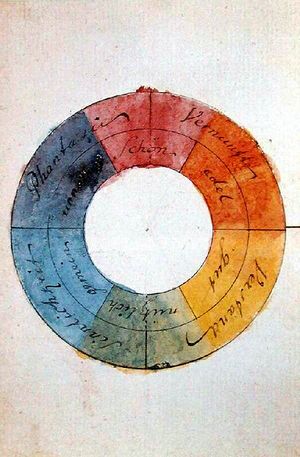Color circle

The color wheel (also called color circle) is a circular arrangement of selected hues to illustrate their mutual relationships. Since the relationships of the colors to each other are many-dimensional and complex, there are a variety of possibilities for the selection and arrangement of the different hues. One can, for example, take purely technical-physical criteria into account, or rely more on the immediate color perception of man, as Goethe, for example, did in his Theory of Colours, and thereby do justice to the artistic and spiritual aspects of color in particular. At the same time, it is noticeable that normally sighted people, even without any further knowledge about the principles of color perception, usually arrange the color tones in exactly the same sequence, whereby the beginning and the end of this color scale are so similar to each other that it can be closed into a circle without a break.
The basic principle of each color circle is based on the fact that similar, related colors are arranged close to each other, while the complementary colors are diametrically opposed to the corresponding original colors. The complementary color is the color that, when mixed with the original color, produces an achromatic, i.e. color-neutral, gray tone. The projection of the natural color variety onto a flat surface necessarily causes a strong simplification ("flattening") of the manifold color relationships. The representation on a curved surface, such as the German painter and acquaintance of Goethe Philipp Otto Runge (1777-1810) attempted with his color sphere, offers a somewhat greater scope in this respect.
